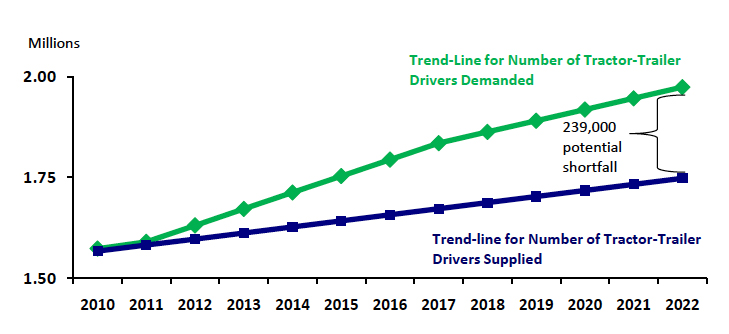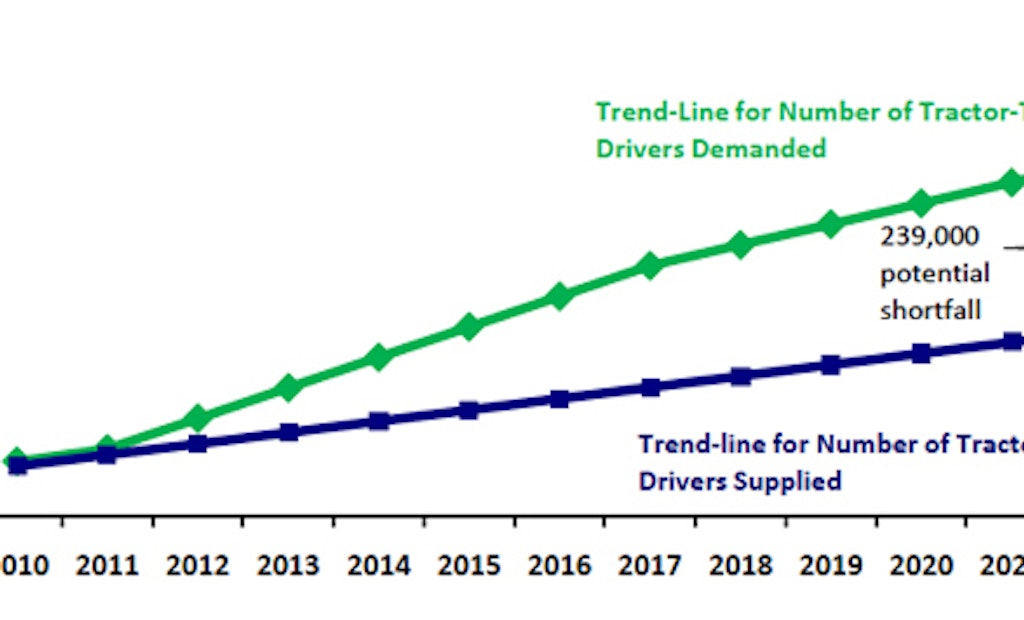Interested in Trucks?
Get Trucks articles, news and videos right in your inbox! Sign up now.
Trucks + Get AlertsRecent headlines in leading business magazines Money Magazine, Forbes and Businessweek are sure to catch the eye of those who work in the trucking or oilfield sectors. Each recently posted an article about current truck driver shortages — a dearth that many experts predict will only get worse as demand continues to grow.
According to WANTEDAnalytics.com, demand for truck drivers has continued to grow in the U.S. A new high was set during August 2013, with more than 272,000 jobs available. An aging workforce and retirements have created demand (and a fair amount of worry) in the industry, especially among long-haul carriers.
These shortages are nothing new, says Bob Costello, chief economist and vice president of the American Trucking Association. “We had an acute driver shortage in 2004, 2005 and 2006,” he notes. In 2008, that shortage went to a surplus, based on more people looking for a job during the start of the recession.
But even amid an economy with many unemployed, there is still a shortage of people willing and, especially, qualified to fill those positions. In addition to the fact that it requires a CDL (for which training and testing can cost $4,000 to $6,000), many would-be drivers bristle at the long hours away from home — a real lifestyle adjustment for many.
The ATA estimates about three million truckers are on the nation’s roads today, but companies need about 30,000 more. And that shortage may only sharply increase; Costello estimates that, at the current trends, the shortage could rise to 239,000 by 2022. It’s primarily an “over-the-road (non-local) market problem,” Costello adds.
In addition to shortages, turnover rates are high, often as high as 97 percent for large truckload fleets, according to the ATA.
NPR.org notes that with increased demand in the oil and gas sectors, the demand for truckers is soaring. The U.S. Energy Information Administration says oil delivered to refineries by trucks jumped 38 percent between 2011 and 2012.
Government regulations, specifically changes to the hours-of-service regulations, only add to the shortage, according to ATA reports. “It will likely reduce motor carrier productivity by as much as 3 percent,” Costello says. “As a result, carriers will have to add more trucks and drivers to haul the same amount of freight.”
The Good, the Bad and the Best?
WANTED Analytics uses a hiring scale score, and based on statistics they posted in November, the cities with the most difficult conditions for hiring truck drivers, based on their hiring scale scores, include Tyler, Texas; Charlottesville, Va.; Savannah and Macon, Ga.; and Champaign-Urbana, Ill. These cities also have longer than average posting periods for jobs.
The cities with the best conditions for recruiting drivers are Lincoln and Omaha, Neb., and Riverside-San Bernardino, San Jose and Santa Rosa, Calif.






